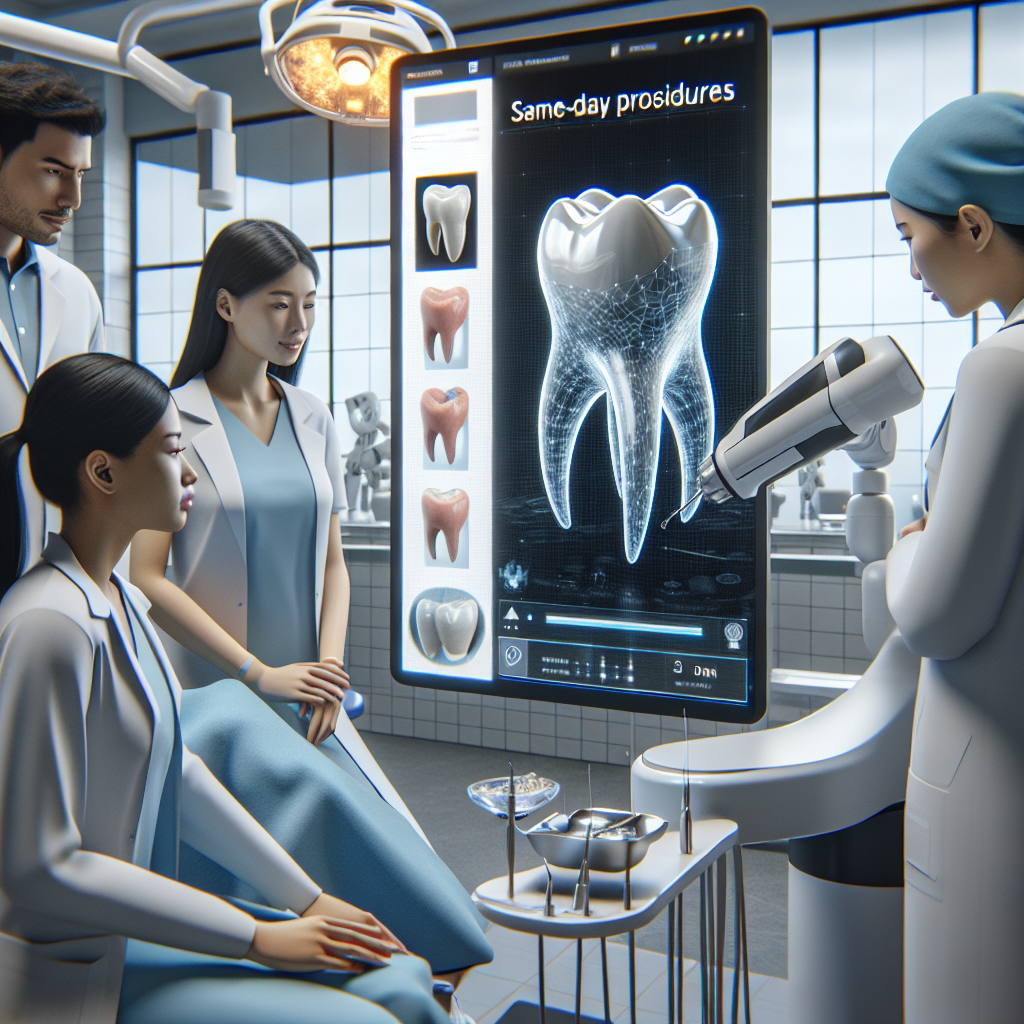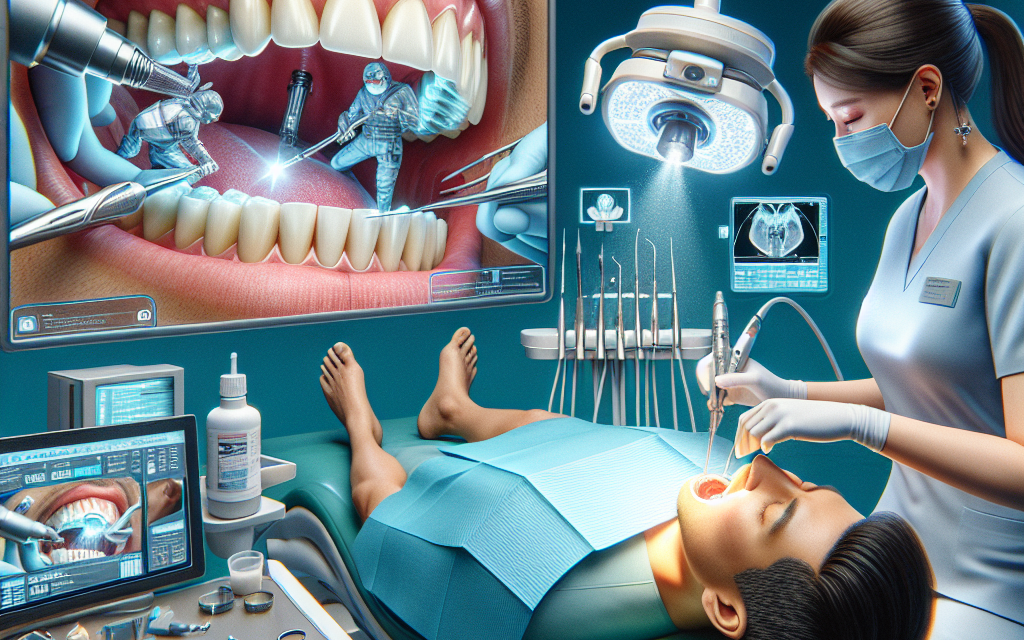Efficient Wisdom Teeth Removal: Harnessing Technology for Same-Day Procedures

Wisdom teeth removal is a common dental procedure that many people undergo at some point in their lives. Traditionally, this process has been associated with multiple visits to the dentist, lengthy recovery times, and significant discomfort. However, advancements in technology have revolutionized the way wisdom teeth are extracted, making same-day procedures not only possible but also efficient and less painful. This article explores the various technological innovations that have transformed wisdom teeth removal, providing insights into how these advancements benefit both patients and dental professionals.
The Evolution of Wisdom Teeth Removal
Wisdom teeth, or third molars, typically emerge in late adolescence or early adulthood. For many, these teeth can cause problems such as crowding, impaction, or infection, necessitating their removal. Historically, the extraction of wisdom teeth was a complex and often painful process, requiring multiple visits to the dentist and a lengthy recovery period.
In the past, the procedure involved traditional surgical techniques, which were invasive and required significant healing time. Patients often experienced swelling, pain, and a risk of infection. However, with the advent of modern technology, the landscape of dental surgery has changed dramatically.
Traditional Methods and Their Limitations
Traditional wisdom teeth removal involved the use of scalpels and forceps, which could be traumatic for the patient. The procedure was typically performed under local anesthesia, with some cases requiring general anesthesia. The recovery period could last several weeks, during which patients had to manage pain and swelling.
Some of the limitations of traditional methods included:
- Increased risk of infection due to open wounds.
- Extended recovery time, often requiring time off work or school.
- Higher levels of discomfort and pain post-surgery.
- Potential for complications such as dry socket or nerve damage.
Technological Advancements in Dental Surgery
In recent years, technological advancements have significantly improved the process of wisdom teeth removal. These innovations have made the procedure less invasive, more efficient, and have reduced recovery times. Some of the key technologies that have transformed dental surgery include:
- 3D Imaging and Digital X-Rays: These tools allow dentists to get a detailed view of the patient’s mouth, helping them plan the surgery with precision. This reduces the risk of complications and ensures a more efficient procedure.
- Laser Technology: Lasers are used to make precise incisions, reducing the need for traditional scalpels. This minimizes bleeding and swelling, leading to a quicker recovery.
- Minimally Invasive Techniques: New surgical techniques have been developed that are less invasive, reducing trauma to the surrounding tissues and speeding up the healing process.
- Advanced Anesthesia Options: Modern anesthesia techniques provide better pain management during and after the procedure, enhancing patient comfort.
3D Imaging and Digital X-Rays: Precision in Planning
One of the most significant advancements in dental surgery is the use of 3D imaging and digital X-rays. These technologies provide dentists with a comprehensive view of the patient’s oral anatomy, allowing for precise planning and execution of the procedure.
The Role of 3D Imaging in Dental Surgery
3D imaging, also known as cone beam computed tomography (CBCT), has revolutionized the way dentists approach wisdom teeth removal. Unlike traditional X-rays, which provide a flat, two-dimensional image, CBCT offers a detailed, three-dimensional view of the patient’s mouth. This allows dentists to see the exact position of the wisdom teeth, their proximity to nerves and other structures, and any potential complications that may arise during the procedure.
Benefits of 3D imaging include:
- Enhanced accuracy in diagnosing and planning the surgery.
- Reduced risk of complications, as dentists can anticipate and address potential issues before they arise.
- Improved patient outcomes, with less pain and faster recovery times.
Digital X-Rays: A Safer, More Efficient Alternative
Digital X-rays have also played a crucial role in improving the efficiency of wisdom teeth removal. Unlike traditional X-rays, which require film processing and expose patients to higher levels of radiation, digital X-rays are quick, safe, and provide immediate results. This allows dentists to make informed decisions about the best course of action for each patient.
Advantages of digital X-rays include:
- Lower radiation exposure, making them safer for patients.
- Immediate results, allowing for quicker diagnosis and treatment planning.
- Enhanced image quality, providing a clearer view of the patient’s oral structures.
Laser Technology: Minimizing Trauma and Enhancing Recovery
Laser technology has become an integral part of modern dental surgery, offering numerous benefits over traditional surgical techniques. By using lasers to make precise incisions, dentists can minimize trauma to the surrounding tissues, reduce bleeding, and enhance the overall recovery process.
The Advantages of Laser-Assisted Surgery
Laser-assisted surgery offers several advantages over traditional methods, making it an ideal choice for wisdom teeth removal. Some of the key benefits include:
- Precision: Lasers allow for precise incisions, reducing the risk of damage to surrounding tissues and structures.
- Reduced Bleeding: Lasers cauterize blood vessels as they cut, minimizing bleeding during and after the procedure.
- Less Swelling and Pain: The use of lasers results in less trauma to the tissues, leading to reduced swelling and pain post-surgery.
- Faster Recovery: Patients typically experience a quicker recovery time, allowing them to return to their normal activities sooner.
Case Studies: Successful Laser-Assisted Wisdom Teeth Removal
Several case studies have demonstrated the effectiveness of laser-assisted wisdom teeth removal. In one study, patients who underwent laser-assisted surgery reported significantly less pain and swelling compared to those who underwent traditional surgery. Additionally, the recovery time was reduced by nearly 50%, allowing patients to resume their daily activities much sooner.
Another study found that laser-assisted surgery resulted in fewer complications, such as dry socket and infection, further highlighting the benefits of this advanced technology.
Minimally Invasive Techniques: Reducing Recovery Time
Minimally invasive techniques have become increasingly popular in dental surgery, offering a less traumatic alternative to traditional methods. These techniques focus on reducing the size of incisions and minimizing damage to surrounding tissues, leading to faster recovery times and improved patient outcomes.
The Principles of Minimally Invasive Surgery
Minimally invasive surgery is based on the principle of causing the least amount of trauma possible while achieving the desired surgical outcome. This approach involves using specialized instruments and techniques to perform the procedure with minimal disruption to the surrounding tissues.
Key principles of minimally invasive surgery include:
- Smaller Incisions: Using smaller incisions reduces the risk of infection and speeds up the healing process.
- Precision Instruments: Specialized instruments allow for more precise manipulation of tissues, reducing trauma and improving outcomes.
- Enhanced Visualization: Advanced imaging techniques provide a clear view of the surgical site, allowing for more accurate and efficient procedures.
Benefits of Minimally Invasive Techniques in Wisdom Teeth Removal
The use of minimally invasive techniques in wisdom teeth removal offers several benefits, including:
- Reduced Pain and Discomfort: Patients experience less pain and discomfort during and after the procedure, leading to a more positive experience.
- Faster Recovery: The reduced trauma to tissues results in quicker healing times, allowing patients to return to their normal activities sooner.
- Lower Risk of Complications: Minimally invasive techniques reduce the risk of complications such as infection and dry socket.
Advanced Anesthesia Options: Enhancing Patient Comfort
Advancements in anesthesia have played a crucial role in improving the comfort and safety of wisdom teeth removal procedures. Modern anesthesia techniques provide better pain management during and after the procedure, enhancing the overall patient experience.
The Evolution of Anesthesia in Dental Surgery
In the past, wisdom teeth removal was often performed under local anesthesia, with some cases requiring general anesthesia. While effective, these methods had limitations, including prolonged recovery times and potential side effects.
Today, advancements in anesthesia have led to the development of new techniques that offer improved pain management and faster recovery times. Some of these advancements include:
- Conscious Sedation: This technique involves administering sedatives to relax the patient while keeping them conscious. It provides effective pain relief and reduces anxiety during the procedure.
- Intravenous (IV) Sedation: IV sedation allows for precise control of the sedation level, providing a deeper level of relaxation and pain relief.
- Local Anesthesia with Enhanced Pain Management: New formulations of local anesthetics provide longer-lasting pain relief, reducing the need for additional medication post-surgery.
Case Studies: Improved Patient Outcomes with Advanced Anesthesia
Several case studies have demonstrated the benefits of advanced anesthesia techniques in wisdom teeth removal. In one study, patients who received conscious sedation reported significantly less anxiety and discomfort during the procedure compared to those who received traditional local anesthesia.
Another study found that patients who underwent IV sedation experienced faster recovery times and fewer side effects, such as nausea and dizziness, compared to those who received general anesthesia.
Conclusion: The Future of Wisdom Teeth Removal
The advancements in technology have transformed the landscape of wisdom teeth removal, making same-day procedures not only possible but also efficient and less painful. From 3D imaging and digital X-rays to laser technology and minimally invasive techniques, these innovations have improved patient outcomes and enhanced the overall experience of dental surgery.
As technology continues to evolve, we can expect further improvements in the field of dental surgery, leading to even more efficient and comfortable procedures. For patients, this means less time spent in the dentist’s chair, reduced recovery times, and a more positive experience overall.
In conclusion, the integration of advanced technology in wisdom teeth removal has revolutionized the way these procedures are performed, offering numerous benefits for both patients and dental professionals. As we continue to harness the power of technology, the future of dental surgery looks promising, with the potential for even greater advancements on the horizon.





